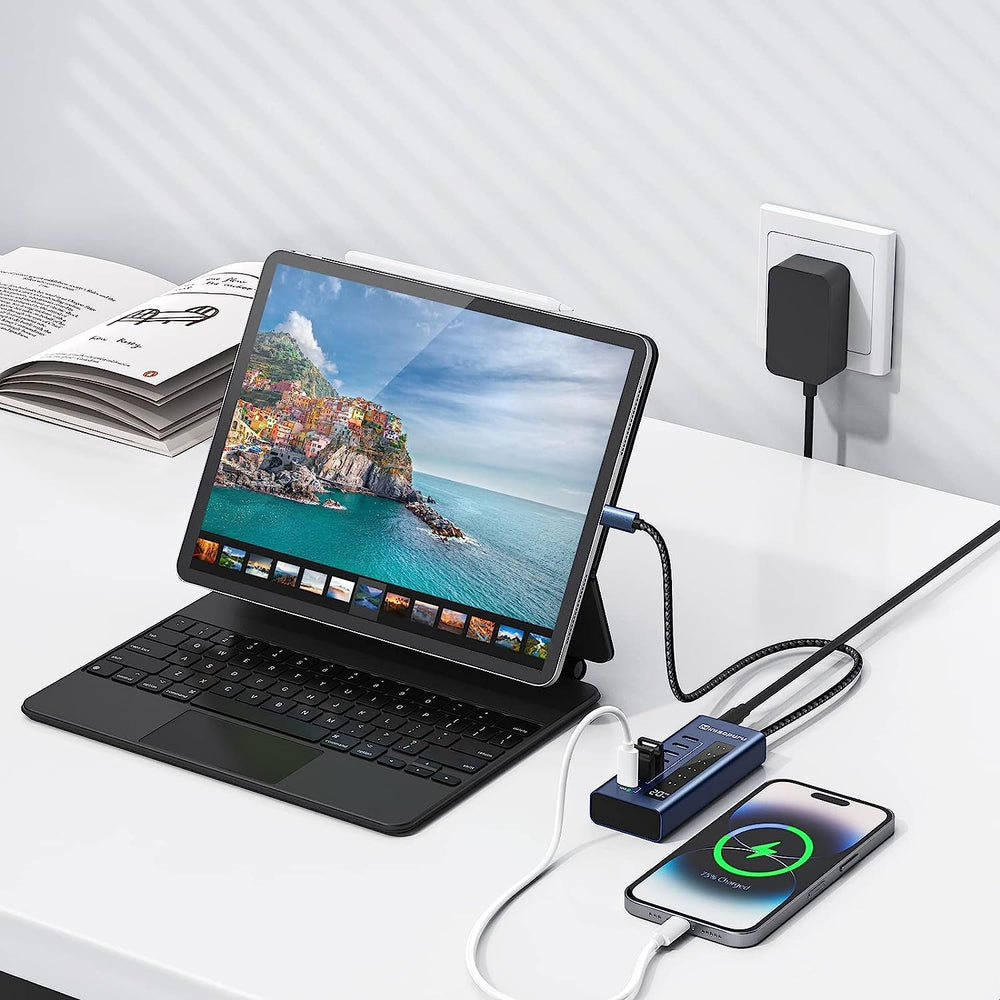As technology products such as mobile phones and computers become more powerful and their screens become larger, power consumption is also increasing. How to achieve fast charging is a topic of concern to users. However, in user experience, the following phenomena have become a difficult problem for consumers:
- The mobile phone has a fast charging function, but why is the charging speed still very slow?
- Is there a hidden danger in fast charging safety? Charging explosion has become a panic.
- Is the phone overheating while charging it? !
The quality of products on the market varies. If consumers use chargers that do not meet the specifications, or use chargers that do not meet the standards, or use inferior cables, not only will the mobile phone fail to achieve the fast charging function, but it will also cause safety hazards. How much do you know about fast charging?
Fast charging principle:
In electricity, voltage (volts, V) multiplied by current (amperes, A) can be used to get power (watts, W). The higher the charging wattage, the shorter the charging time. Today's fast charging technology can be achieved in the following three ways:
- High voltage and low current mode: increase voltage and increase charging power
- Low voltage and high current mode: increase current and increase charging power
- High voltage and high current mode: increase voltage and increase current
Simply put, fast charging is to effectively increase the charging speed of products and shorten the charging time within a safe load range. The hotly debated fast charging technologies on the market include Quick Charge™ (QC) launched by Qualcomm and USB Power Delivery (PD) defined by the USB Developer Forum.
What is USB Power Delivery?
USB Power Delivery (USB PD) is a USB power supply expansion standard that uses USB (Universal Serial Bus) cables to support up to 100W power supply and reception. In the past, the maximum power supply of USB was USB 2.0 (2.5W), USB 3.0 (4.5W), and BC 1.2 version (7.5W). Now it has jumped to 100W power supply and reception, so notebooks, tablets and other devices that were not supported in the past can also be powered, and the number of supported devices has been greatly expanded.
USB PD uses a USB Type-C® connector, which can supply power while transmitting data in the past. It covers mobile phones, cameras, power banks, tablets, laptops, monitors, etc., and can easily handle charging and data transmission with one line. It also supports Alternate Mote mode and can process video signals. Using a single USB port, you can transfer data, power, and transmit video signals, thus creating a simple and convenient environment.
USB Power Delivery (USB PD) Technology
The USB Power Delivery (USB PD) 1.0 specification divides the power supply capability into five levels (Profile 1~5):
- Profile 1 (provides 5V@2A, 10W power supply; suitable for various portable devices such as mobile phones)
- Profile 2 (provides 5V@2A, 12V@1.5A, 10~18W power supply; suitable for tablets or external storage devices)
- Profile 3 (provides 5V@2A, 12V@3A 36W power supply; suitable for ultra-high-end notebooks and other devices)
- Profile 4 (provides 5V@2A, 12/20V@3A 60W power supply; the maximum power supply specification supported by microUSB, suitable for All in One computers)
- Profile 5 (provides 5V@2A, 12V@5A, 20V@5A 100W power supply; for standard A/B and USB Type-C® connectors, suitable for LCD monitors and flat-panel TVs)
USB PD 1.0 supports four voltages: 5V, 9V, 15V, and 20V, up to 100W, and is backward compatible with USB 3.2/2.0, BC 1.2/1.1/1.0, and has 5 profiles. USB PD 2.0 can use Type-A, Tyep-B, and Type-C interfaces. With USB PD 3.0, only the USB Type-C® interface can be used, and PPS (Programmable Power Supply) is added.
What is QC fast charging?
Quick Charge™ (QC) is a fast charging technology developed by Qualcomm. Any Android phone equipped with its Snapdragon system chip can use its fast charging technology. In addition to supporting a variety of mobile phones using Snapdragon processors, it also supports some processors of other brands. The historical versions of QC fast charging technology are as follows: QC 1.0 supports 10W and above; QC 2.0 supports 15W and above; QC 3.0 supports 18W and above; QC 3+ supports 18W and above; QC 4 supports 18W (A)/27W (B) and above; QC 4+ supports 18W (A)/27W (B) and above; QC 5 supports 45W and above.
In 2020, Qualcomm launched the commercial fast charging technology Quick Charge™ 5 (QC 5), which supports fast charging chips with a charging power greater than 100W for Android smartphones. Its efficiency is 70% higher than the previous generation, and the charging speed is 4 times faster. It can charge the device from 0% to 50% in 5 minutes; at the same time, it adopts Qualcomm's charging power intelligent identification adapter technology to ensure charging safety and extend the life of the device battery at the highest power conversion and transmission efficiency.
In addition, QC 5 is not only compatible with the previous QC 4+, QC 4, QC 3 and QC 2, but also continues QC4 and can also be used in USB-PD and Type-C technologies, and is compatible with industry standards such as the USB Type-C protocol, so it can be further expanded to other devices.

